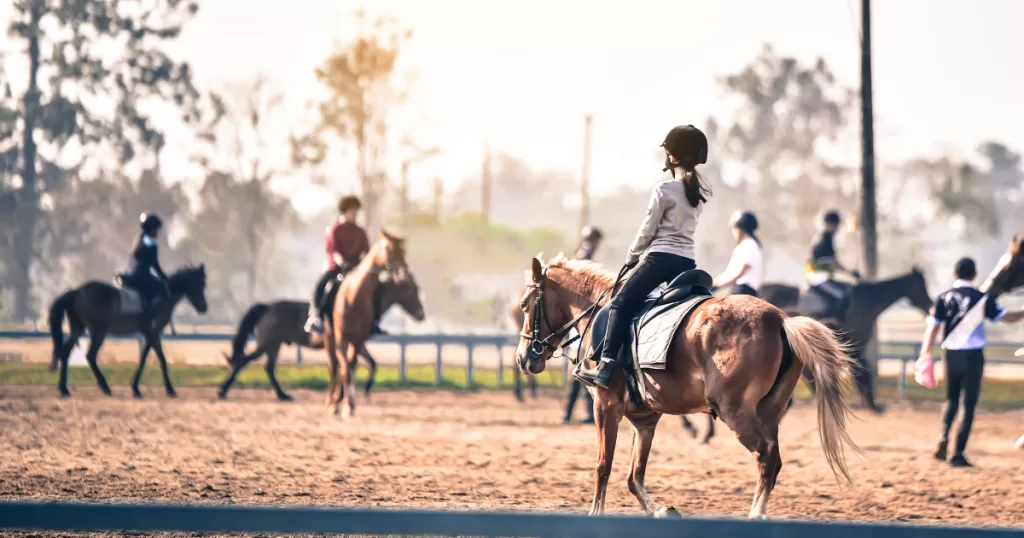
Groundwork is an essential part of training for any horse, regardless of their discipline or level of experience. By focusing on groundwork exercises, you can establish trust, improve communication, and lay a strong foundation for more advanced training. Here are some key groundwork exercises to get you started.
Ready to Become a Confident Rider?
Sign up to our Free Newsletter for exclusive tips, tricks and tidbits that will help you grow as a beginner equestrian.
1. Leading with Respect
Teaching your horse to lead properly is fundamental. This exercise reinforces your position as the leader and helps your horse understand the basics of personal space and respect.
Steps:
- Stand at your horse’s shoulder with the lead rope in your hand.
- Walk forward, ensuring your horse matches your pace without crowding or lagging behind.
- Practice stopping and starting, expecting your horse to respond promptly to your cues.
2. Backing Up
Backing up helps your horse learn to yield to pressure and enhances their respect for your space.
Steps:
- Stand facing your horse with the lead rope in your hand.
- Apply gentle pressure to the lead rope and step towards your horse, encouraging them to move backward.
- Release the pressure immediately once your horse takes a step back. Repeat until your horse backs up smoothly with minimal pressure.
3. Lunging
Lunging is excellent for exercising your horse and teaching them to respond to voice commands and body language.
Steps:
- Attach a lunge line to your horse’s halter and stand in the center of a round pen or open space.
- Use a lunge whip or your arm to signal your horse to move forward in a circle around you.
- Practice transitions between walking, trotting, and cantering, using voice commands and body language to cue your horse.
4. Yielding the Hindquarters
Teaching your horse to yield their hindquarters helps establish control and can be useful for later riding exercises.
Steps:
- Stand beside your horse, facing their hindquarters.
- Apply gentle pressure to their side, just behind the girth area, with your hand or a stick.
- Encourage your horse to step their hindquarters away from you, crossing their back legs as they do so.
- Release the pressure as soon as your horse responds correctly.
5. Desensitization
Desensitization helps your horse become comfortable with various stimuli, reducing spookiness and building confidence.
Steps:
- Introduce your horse to different objects, such as tarps, plastic bags, or umbrellas.
- Allow your horse to investigate the objects at their own pace.
- Gradually increase the intensity of the stimuli, always ensuring your horse remains calm and relaxed.
Conclusion
Groundwork exercises are the building blocks of a well-trained and responsive horse. By incorporating these exercises into your training routine, you can develop a deeper bond with your horse, enhance their responsiveness, and create a solid foundation for future training. Remember, patience and consistency are key. Happy training!
Ready to Become a Confident Rider?
Sign up to our Free Newsletter for exclusive tips, tricks and tidbits that will help you grow as a beginner equestrian.
